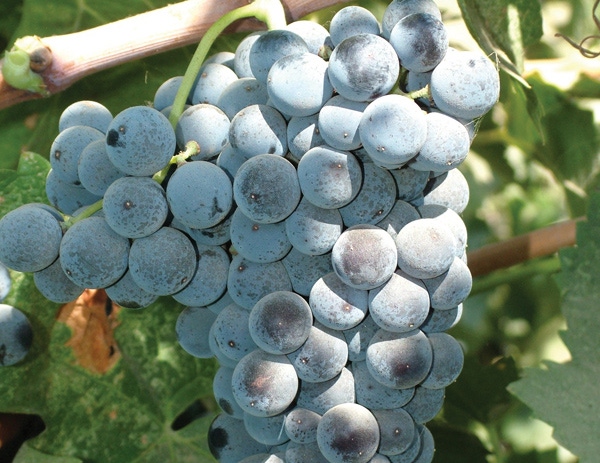
After jumping the gun to get a three-week head start on the usual beginning of the season, San Joaquin County’s wine grape crop was ripening about 10 to 12 days sooner than average by the end of July, reports Paul Verdegaal.
As a result, he expected this year’s harvest to get underway in the first week of August, as growers started picking low-sugar grapes for sparkling wines, says Verdegaal, University of California Cooperative Extension viticulture farm advisor for San Joaquin County.
The early start to this season was propelled by uncommonly warm winter temperatures and by about twice as much rain last autumn. Despite the drought, growers received more than 9 inches of rain from October through December, instead of the more typical 4- to 5-inch total for that period.
“Those rains soaked deeply into the soil, contributing to strong vine growth early in the season.” he says. “Also, by eliminating the need for winter irrigation, as much as three or four times, normally, the fall rains allowed growers to stay ahead of the heat and dry soil conditions in the spring.”
Since then, however, hot and continuing dry weather has forced growers to irrigate a little more than normal this year, he adds.
Still, despite some scattered problems with powdery mildew in the spring and more mite pressure than usual this summer, due to dry conditions, things are progressing pretty well in the county’s vineyards, Verdegaal notes. That’s despite the fourth straight year of drought.
“There’s been some water stress on the vines, but, overall, it hasn’t been too bad,” he says. “I’ve heard of only a few wells that had to be deepened. Growers seem to be dealing effectively with the drought and the crop looks to be about average in size, depending on variety.”
And that’s probably OK. While a small crop would likely mean smaller revenues for growers, a large crop might add to the water stress, reducing production next year, Verdegaal points out. “We will have to wait to see how happy wine makers are with the color, flavors and acids of the grapes,” he says. “But, In general, it looks like the quality of this year’s San Joaquin County crop might be pretty good.”
Growers will get their first indications when they start bringing in such low-sugar Muscat, and other varieties, like Sauvignon Blanc and Zinfandel, to produce sparkling wines.
About the Author(s)
You May Also Like




